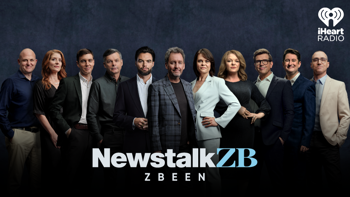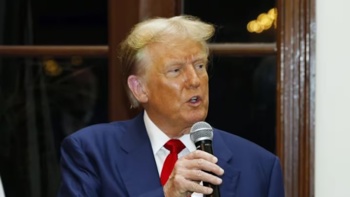
By Susan Edmunds of RNZ
- Consultation is under way on a proposal to allow KiwiSaver schemes to invest in private assets, potentially offering higher returns.
- Commerce and Consumer Affairs Minister Andrew Bayley said this could benefit the economy and KiwiSaver members by providing capital for infrastructure projects.
- However, concerns have been raised about costs, fees and liquidity, with experts urging caution and suggesting alternative approaches.
Even some KiwiSaver managers are not convinced by a plan to remove some of the barriers to the schemes investing in private assets – but others say there are significantly higher returns on offer for investors.
Consultation is currently under way on the proposal.
Commerce and Consumer Affairs Minister Andrew Bayley said more KiwiSaver schemes investing in private assets would bring “substantial benefits” for New Zealand.
It would offer a significant supply of private capital to businesses and the wider economy, and would offer KiwiSaver members another asset class that could give them higher returns, he said.
He said it could mean KiwiSaver schemes investing in road and rail or renewable energy projects, or putting their money into private New Zealand businesses.
But some in the industry have already raised concerns, such as AUT professor Aaron Gilbert, who has outlined potential problems around the costs and fees involved, as well as liquidity – how hard it is to sell the assets when required.
Kernel Wealth founder Dean Anderson said while it was clear New Zealand had “major challenges” with ageing infrastructure and an infrastructure deficit that needed to be funded, he was not convinced that encouraging KiwiSaver providers to help plug the gap “case by case or project by project” would be a good outcome.
He said that if providers were offering funding to work such as infrastructure projects, the fees charged might not be transparent and how the valuations were calculated could raise concerns.
He said in the venture capital arena, a lot of people talked about the higher returns that could be on offer, but there was an “increasing number of pieces challenging that”.
“It’s easier to make something seem a bit higher return than the nominal experience for the investor has been.”
He said private equity and venture capital investments had been attractive in the past few years because interest rates had fallen “to effectively zero”.
“Unlisted assets were able to be traded between a growing number of venture capital and investment firms, bidding the price up, knowing someone would pay more down the line. The environment has changed now.
“Canva is a well-known software tool that made a couple of investors excessive outsize returns and lit the fire under a whole lot of other people setting up venture capital funds and private equity, thinking they would do similar things for their clients.
“But you’ve got to be cautious entering a space that doesn’t have effective means of valuing assets like you have on listed markets that are scrutinised every day.”
He said there could be better ways to “support New Zealand Inc”.
That could mean getting more companies listed on the stock market or looking at a method such as that used by Singapore to fund infrastructure, where there could be a central fund that ACC and the Super Fund would invest into with a central body of expertise.
“Rather than having everyone assess things on a case-by-case basis. It could issue bonds or other means to raise capital. It means if KiwiSaver is invested, it’s diversified across multiple infrastructure products and has the collective expertise of a single body rather than everyone trying to assess it themselves.
“We’ve got to remember we are a very small nation spread across a large bit of land. We can’t spread ourselves too thin. There are other ways to create the desired outcomes and KiwiSaver can play a role but we need to think about the end investor.”
He said New Zealand investors could end up exposed if their KiwiSaver was made up significantly of New Zealand infrastructure and private assets. For many, it would be their second-largest asset behind a home, also in New Zealand, and many would rely on the New Zealand economy for income.
“That is extra risk that people need to be conscious of. It would only take an alpine fault or some other major disaster or economic event and you are heavily exposed.”
He said one of KiwiSaver’s benefits was that it was diversified internationally so people were not completely reliant on the local economy.
“There’s tension and balance between the NZ Inc benefit versus this is someone’s retirement savings and you’ve got to think about that individual. I’m not convinced there are major things blocking a greater allocation to New Zealand assets. It’s a reflection of the size of KiwiSaver, the size of the market and investment opportunities.”
KiwiSaver provider Simplicity has some of the most well-known unlisted investments among its portfolio, in property developed by Simplicity Living, as well as private equity, venture capital and mortgages.
“The principal problem they’re trying to address if is you want to switch your KiwiSaver to another provider, we have to provide all the money to that new provider within 10 days,” founder Sam Stubbs said of the Government’s moves.
“That’s okay if you can sell shares on the stock market but if you have illiquid investments, you can only own so many because when you move, everyone else ends up owning a bit more.”
A solution could be “side pocketing” where, if someone’s fund was invested in a problem asset, the departing investor could be paid 95% or 96% of their investment on the understanding the remainder would be paid later.
“The genius of the way KiwiSaver is arranged is that Inland Revenue has all the money so even if the provider gave it in a year’s time, IRD knows where you are, which fund you are in and can give you the money quickly and efficiently.”
He said the stock market was small and shrinking in relation to the size of the New Zealand economy and the bond market was limited.
“There’s a lack of things to invest in.”
There were many private investment opportunities, he said, including electricity distribution companies, the housing stock and family-owned companies.
“I think it’s a really big step in the right direction.”
Stubbs said foreign investors who had invested in these sorts of assets previously had generated better returns in New Zealand than they had achieved in their home countries. This could be a way to give New Zealanders some exposure.
“It should give very good risk-adjusted returns. It removes the currency risk and because you’re close to the assets in your home market you should have an information advantage.”
He said it had worked well for Simplicity. “There’s no reason why it shouldn’t be the case for other investors as well. We’re going to need billions of dollars invested in infrastructure and KiwiSaver investors are very long-term investors, with long-term assets as well. That’s what we call in the industry duration matching.”
He said for the fees being paid for KiwiSaver, managers should be willing to hire the right people with the expertise to make it happen.
“That would be in the best interest of investors.”
More potential for KiwiSaver
Rupert Carlyon, founder of Koura Wealth, agreed KiwiSaver should be doing a lot more.
“In Australia about 15% to 20% and some funds as high as 30% are going to private assets. That means everything from venture capital to private equity to infrastructure to property. There are lots of different alternatives available, it’s a whole different market that can be invested in. I think it’s a good thing for investors.”
He said the risk-return trade-off was not worse than public markets and could be better.
It could also reduce the volatility of a portfolio, he said.
“If you’ve got a private equity portfolio set of assets that’s generally valued monthly or quarterly.
“If there’s a sell-off in the markets valuations stay where they are and you don’t get the whipsaw movements.”
He said while some people might argue that meant the valuation did not reflect the true market value at the time, it was arguable whether the listed market did, either, when it dropped 15% in two days and recovered within weeks.
“[Private assets] get really good engagement from investors. If we want to make KiwiSaver tangible, help people understand it’s an investment account, you’re doing real things with your money, private assets is an easy way to do that. Apathy is just way too high. The more we can do to engage our members, the more they will buy into KiwiSaver and contribute to that.”
But he said it was harder for managers to run a private asset strategy.
“It’s very easy to buy a business, but then you’ve got to figure out what to do once you own it. When you’re in public markets, if two weeks later you decide you made the wrong decision you can get out. That doesn’t work for private markets. There’s a lot more work required on the way in to then have to figure out what to do with it.”
That would require investing through third-party managers, which could mean higher costs, he said.
“Particularly when you think it only makes up 5% to 10% of a portfolio, it does have implications for fees. Managers need to take a view of what is the best answer for our members.”
He said the allocation to private assets was one of the reasons that Australian fees were higher.
“They do have a much broader set of investment options. It should lead to higher fees across the industry. I’m not convinced that’s a bad thing because of all the reasons I think private equity is a good place to be as well.”
He said Australian funds were able to manage the liquidity questions but it could require a different approach from the New Zealand regulator.
“It is new, it’s not something extremely well understood in New Zealand and that’s true with both regulators and supervisors and managers.”
Take your Radio, Podcasts and Music with you









